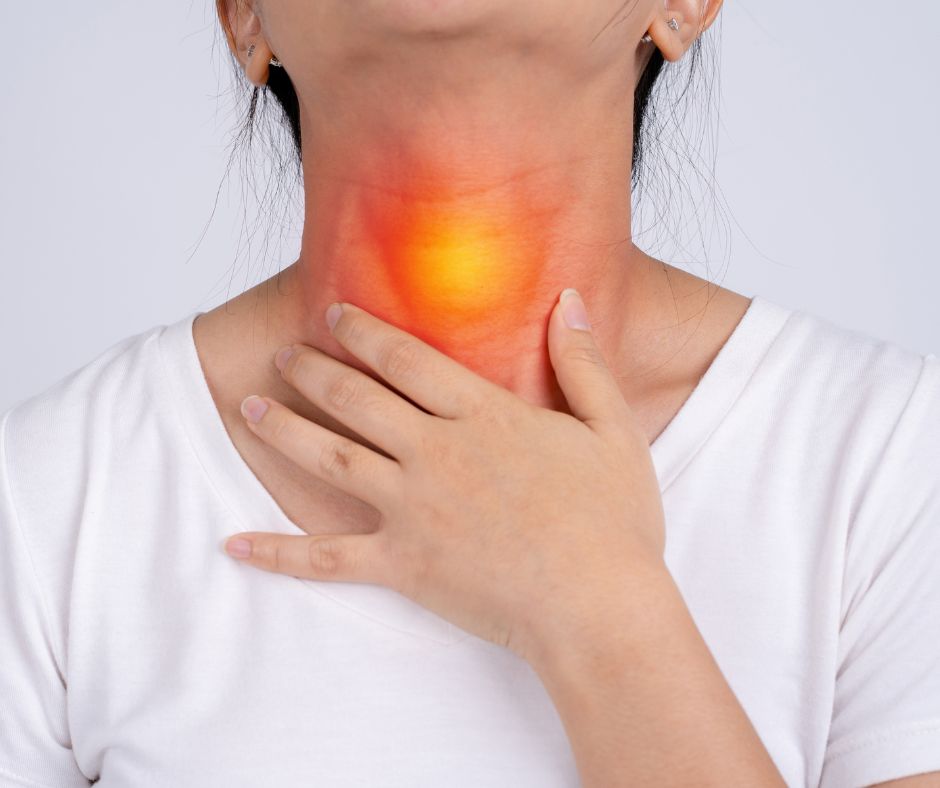Living with chronic allergies can be a tough pill to swallow. It’s even harder for those with Eosinophilic Esophagitis (EoE), a rare allergenic disease that occurs in the esophagus and, quite literally, turns swallowing into a dangerous struggle. With cases on the rise around the country – nearly doubling in the past two decades alone – we’re taking a bite out of this little-known condition to help you control chronic allergies from every angle.
What is Eosinophilic Esophagitis?
If you think the name is a mouthful, try living with the disease! EoE is a chronic immune disorder of the esophagus (that handy tube that links your mouth to your stomach). If you have EoE, white blood cells called eosinophils build up in the lining of your esophagus. These eosinophils are made by the immune system to help fight allergens or infections, and their presence causes inflammation, swelling, and tissue damage in the delicate tube. Simply put, it’s like having a perpetual allergic reaction in your esophagus. If left untreated, EoE can cause esophageal narrowing and dysfunction over time.
What Causes EoE?
The exact cause of EoE is still a bit of a mystery, but it’s widely accepted that the disease is usually related to allergies. About half of people with EoE have seasonal allergies or asthma, and many report worse symptoms during certain times of year. Food allergies are another major culprit, especially to common allergens like wheat, milk, eggs, and nuts. Studies also suggest that EoE may have a genetic component, as it tends to run in immediate families.
EoE Risk Factors
EoE can occur at any age, from early childhood to senior adults. It is most common in caucasian males, though variations in gender and ethnicity do occur. Other risk factors for EoE include:
- Chronic allergies, eczema, or asthma
- Auto-immune conditions such as Inflammatory Bowel Disease (IBS) or Celiac Disease
- Living in dry or cold climates
- Family history
What are the Symptoms of EoE?
The most common symptom of EoE is difficulty swallowing. As the condition worsens and the esophagus narrows, food impactions can become frequent and severe. EoE is now the leading cause of emergency endoscopies to remove an esophageal bolus, accounting for over 50% of cases.
Other signs and symptoms vary by age and can include:
- Chest pain or heartburn
- Abdominal pain
- Regurgitation or vomiting
- Decreased appetite
- Food avoidance
- Poor weight gain and growth in young children
Diagnosis & Treatment
If you think your esophagus is hosting this unwanted eosinophil party, it’s essential to see your healthcare provider. If EoE is suspected, a gastroenterologist will conduct an upper endoscopy, a fancy term for sending a camera down your throat to check things out and take samples for testing. If you have EoE, your esophagus may have characteristic features like rings, ridges, or corrugations that can be seen on camera. Biopsies taken during this procedure can confirm the presence of eosinophils; currently, more than 15 eosinophils per high-powered field are required for a diagnosis of EoE.
Once you have your diagnosis, it’s time to talk treatment. EoE can’t be cured, but there are treatment options that can improve your symptoms and return your quality of life. Your healthcare provider can help you determine the right treatment plan, which may include:
Dietary Changes. If food allergies are the culprit, avoiding known triggers is your first line of defense. This could mean making major dietary changes to reduce your exposure to certain foods or ingredients.
Medications. Proton Pump Inhibitors (PPIs) are prescription medications that lower the level of acid in your stomach. This can reduce symptoms like heartburn and regurgitation, and is a common first step in EoE treatment. Topical steroids can also be taken as a liquid or inhaled medication to reduce localized inflammation in the esophagus.
Esophageal Dilation. In severe cases, your doctor may suggest a procedure called esophageal dilation. This involves gently stretching the esophagus to counteract narrowing and make it easier for food to pass through. The procedure is done under sedation and may need to be repeated for lasting relief.
Immunotherapy. If you know you have chronic allergies, addressing them might be the key to managing EoE. EoE is often an exaggerated response of the body to allergens, so managing allergies can be a game-changer. And that’s where we at America’s Best Care Plus come in with our compounded sublingual allergy drops. By targeting the root of the allergy, these drops might just be the peace treaty your esophagus is looking for. Contact our team today to learn more.

